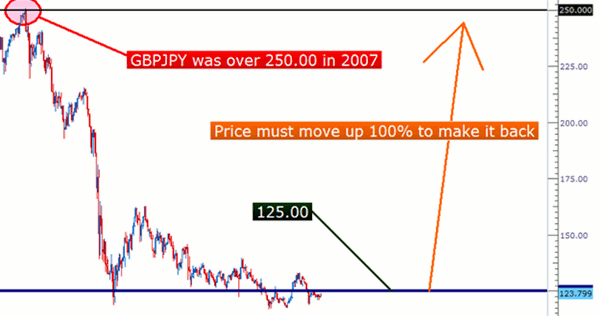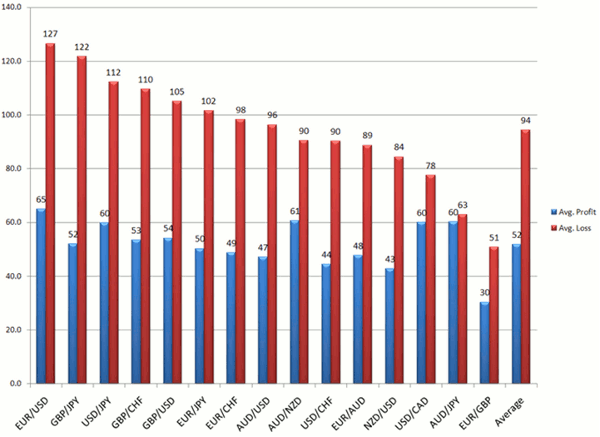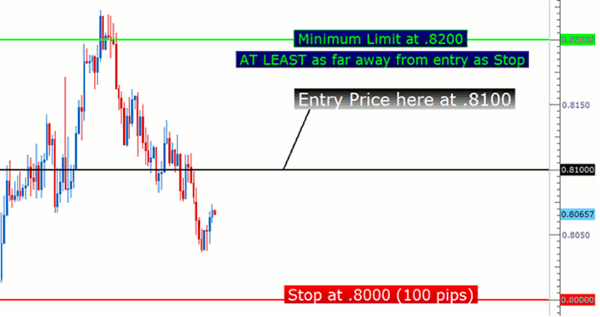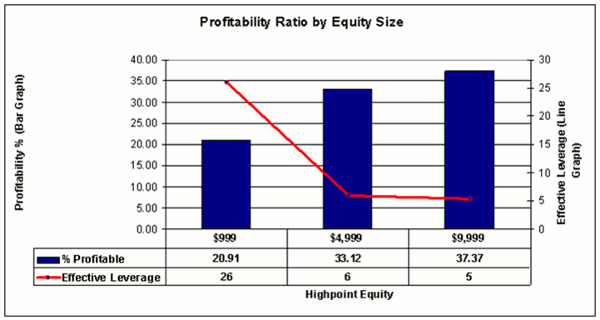James Stanley of DailyFX.com boils down every profitable currency trader’s risk management strategy into a few simple letters.
Many begin to trade currency because they want to make a large amount of money with a small initial investment.
In the Forex market, where leverage can be extended up to 50 times the value of the trader’s account, this can often be one of the primary drivers to bring in new traders. What is not always immediately prominent to these traders is that they also face the very real risk of losing money.
New traders can become blinded by greed—although greed, in and of itself, isn’t necessarily a bad thing. After all, anyone that wanted to improve their financial situation in the past needed the same type of pragmatic foresight to want more, right?
The negative aspect of this "new trader greed" isn’t so much the greed itself, but rather what it can cause new traders to do—actions that can cause catastrophic impact to their accounts, their goals, and if left unchecked, a few trades can even ruin their trading career.
This article is an attempt to help traders prevent such scenarios by focusing on the more common pitfalls of risk.
Pitfall A: Trading Without a Stop
Some traders, after a brief investigation of technical charts, come to the conclusion that price oscillates so wildly—that if they are patient enough with a losing trade, price will come back to their entry level, or perhaps even allow them to make a small profit.
This is far from the truth. Just ask any trader that bought GBP/JPY at 250 or above in July 2007 (the current price at time of writing is below 124, a move of nearly 50% of the currency pair’s value).
Any trader employing the mantra of "price will come back' with a GBP/JPY position from July 2007 is sitting in a pretty rough situation right now. And the prospects of price making a meteoric 100% rise in price seems distant; if at all even possible.
This falls exactly in line with the research performed for the DailyFX Traits of Successful Traders series, in which Quantitative Strategist David Rodriguez found that The Number One Mistake that Forex Traders Make is that traders often lose so much more when they are wrong than they make when they are right.
How to Prevent Pitfall A: Place a stop on every trade that is taken, so that when you are incorrect in a trade idea, the damage can be mitigated. In the DailyFX On-Demand Video Course, we suggest risking less than 5% of the trader’s account at any one point in time. Many traders wanting to be more conservative have taken this a step further, looking to risk a maximum of 1% of their account value on each individual trade idea.
The illustration below will show how this can be done:
Next: Pitfall B: Using Unbalanced Risk-Reward Ratios
|pagebreak|Pitfall B: Using Unbalanced Risk-Reward Ratios
As an extension of the Number One Mistake that Traders Make, traders observed in the research that spanned over 12 million individual trades often took far larger losses on losing positions than they gained on winning positions.
The bar graph below, taken directly from the article, shows traders’ average wins (in blue) and average losses (in red) in some of the more common currency pairs:
The reason for many of these instances is likely lack of planning. After all, not many traders go into trades expecting to lose $2 for every dollar they may potentially gain.
A much more likely scenario is a trader initiating a position because they feel a particular move might materialize, and in their zeal to get in before missing out, they fail to place a stop or a limit on the trade. When they check on the trade a few hours later, they may be in for a sour surprise.
And as human nature dictates for us to desire to be right, traders with small gains might close the trade quickly for fear of seeing it turn into a loss, while traders with losing positions might hold on to the trade just hoping that price will get back—only closing the trade and facing the music when it becomes obvious that that is not the case.
How to Prevent Pitfall B: Ensure that the limit on the trade is at least the distance of the stop on the position.
Pitfall C: Employing Too Much Leverage
|pagebreak|Pitfall C: Employing Too Much Leverage
As we started with in this article, many come to the FX market looking to make a lot of money with a small investment. This is made possible by the large amounts of leverage that are made available. What may not be immediately prominent to traders is that excessive leverage will often bring disastrous consequences over the long term.
And just because leverage is available, it doesn’t mean that it all has to be used. As a matter of fact, many professional traders will trade with far less than the available leverage in an effort to get the best overall return.
This may sound counter-intuitive to new traders: Why would one trade with less leverage in an attempt to make more?
But an easy way to think of this is as such: When you are trading a position that is too large, each pip movement in price has that much more of an impact to your trading account.
And just like we looked at above, many new traders hinge their results in the market based on emotional reactions. And when the trade size is too large, and each pip matters so much—it only hastens the process by which these traders have to make short-term reactive decisions.
In the fourth part of the Traits of Successful Traders series, Jeremy Wagner looks at exactly that. In the investigation of ‘How Much Capital Should I Trade Forex With,’ Jeremy found that traders with smaller balances in their accounts would often take on far larger levels of risk.
From the table below, taken directly from the article, you can see that traders with less than $1,000 in their accounts would, on average, take 26 times leverage on their trades (for every $100 in the account, the trader is trading a position on average of $2,600). On the other hand, traders with between $5,000 and $9,999 would take on far more moderate levels (on average 5:1, a trader taking on a position of $500 for every $100 in their account).
Correspondingly, the traders at 5:1 leverage saw profitability at far greater clips than traders at 26:1. Traders using extreme leverage were profitable only 21% of the time, while traders using 5:1 leverage were profitable 37% of the time.
Some traders may think that traders with between $5,000 and $9,999 were more experienced, professional traders.
How to Prevent Pitfall C: Avoid excessive levels of leverage. Many professional traders attempt to keep their leverage under 10:1, meaning that they are taking on positions less than $10,000 for every $1,000 in their trading accounts.
Some traders take this a step further (such as those observed in the Traits of Successful Traders research) by using smaller levels such as 5:1 (taking on positions less than $5,000 for every $1,000 in their trading accounts). The table below will outline some of the more popular Leverage ratios with amounts that traders can utilize in an attempt to stay under the 10:1 leverage amount:
James Stanley is a trading instructor with DailyFX.com.



























